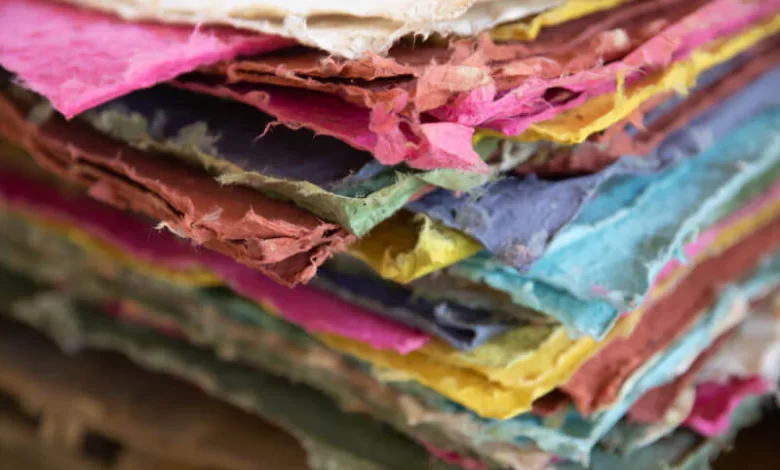The Art and Science of Elephant Poop Paper

Elephant poop paper is not a set of words you ever expected to see together. POOPOOPAPER had one of those brilliant “wait a minute…” moments while wandering around northern Thailand, surrounded by elephants and their rather substantial “contributions” to the local landscape.
While most visitors were busy watching their step around these massive piles, the POOPOOPAPER team saw something different: mountains of valuable fiber going completely to waste.
Unlike trees that stubbornly take 10-40 years to mature enough for papermaking (patience isn’t everyone’s virtue), elephant poop arrives fresh daily, without fail. An adult elephant produces about 300-400 pounds of the stuff EVERY DAY. That’s not a waste management problem—that’s an opportunity with a tail!
The Science Behind The Elephant Poop Paper Business
What makes elephant poop the perfect papermaking material? It’s all about the fiber content!
Elephants are notoriously inefficient digesters—they only absorb about 40% of what they eat. The rest passes through largely intact, which is unfortunate news for elephant energy efficiency but a stroke of luck for innovative papermakers. Those undigested plant fibers are essentially pre-processed cellulose—the exact material needed for quality papermaking.
When you think about it, elephants are essentially walking paper factories that conveniently deposit their raw materials wherever they please. They’re doing half the production work without even trying! As the POOPOOPAPER team likes to joke, “When life gives you poop piles, make stationery!”
Their “Crappy” Process (The Puns Are Unavoidable)
Here’s how yesterday’s elephant breakfast becomes tomorrow’s journal:
The Collection Phase (AKA “Scooping Duty”)
No, they don’t draw straws to see who gets this prestigious task—though that would be entertaining! The company has developed wonderful relationships with elephant sanctuaries and parks around northern Thailand who are more than happy to have this resource taken off their hands. POOPOOPAPER team members are probably the only people who show up smiling when it’s time to clean the elephant enclosures.
The Scientific Cleaning & Breaking Down
Once collected, the team removes debris like twigs, dirt and stones. Then comes the crucial part: boiling the fiber for 4-6 hours. This process accomplishes three important things:
- Eliminates all bacteria and pathogens (yes, these elephant poop notebooks are completely sanitized!)
- Breaks down lignin, the natural glue that holds plant fibers together
- Separates the cellulose fibers so they can be redistributed in the papermaking process
The science here is similar to traditional papermaking, except they’re using pre-processed plant matter. And in a nice ecological touch, the water used to boil these fibers can be later used to hydrate nearby plants and vegetation — it’s rich in remaining nutrients!
The Fiber Fusion
This is where art meets science in the POOPOOPAPER production shop. The team blends elephant fibers with complementary plant fibers like banana stems (otherwise agricultural waste), pineapple leaves, or mulberry bark. These additions ensure a strong and well-bonded sheet of elephant poop paper.
The Colorful Chemistry
To color their elephant poop paper, POOPOOPAPER uses non-toxic, food-safe dyes that bond with the fibers at a molecular level. Unlike commercial dyes, theirs don’t contain heavy metals or other questionable chemicals that might end up in waterways and be harmful to the environment. It’s totally organic and chemical-free.
Sheet Formation: Tradition Meets Science
The POOPOOPAPER artisans use a technique dating back to 105 CE when Cai Lun invented papermaking in China. They submerge screens in vats of their fiber mixture, lift them horizontally, and allow water to drain through, leaving an even layer of fibers behind.
When visitors inevitably ask if the paper smells, the standard company response is, “Only like innovation!” But truthfully, after their thorough process, it just smells like regular paper—perhaps with a hint of earthy character.
Why Choose POOPOOPAPER?
POOPOOPAPER knows they won’t be saving the world single-handedly. They’re just a small operation making practical use of what’s abundantly available in their corner of Thailand. Trees take decades to grow large enough for paper production, but elephant poop? It’s arriving fresh daily whether used or not. Every sheet of elephant poop paper they make from elephant fiber instead of wood fiber means one less bit of forest needs cutting.
Plus, they get to make poop jokes at work. Every. Single. Day. And frankly, who wouldn’t want that job perk?
For customers looking to join this little “movement” (pun absolutely intended), POOPOOPAPER products make for great eco-friendly gifts that come with both a story and inevitably a laugh or two. Check out their featured sustainable products here.
